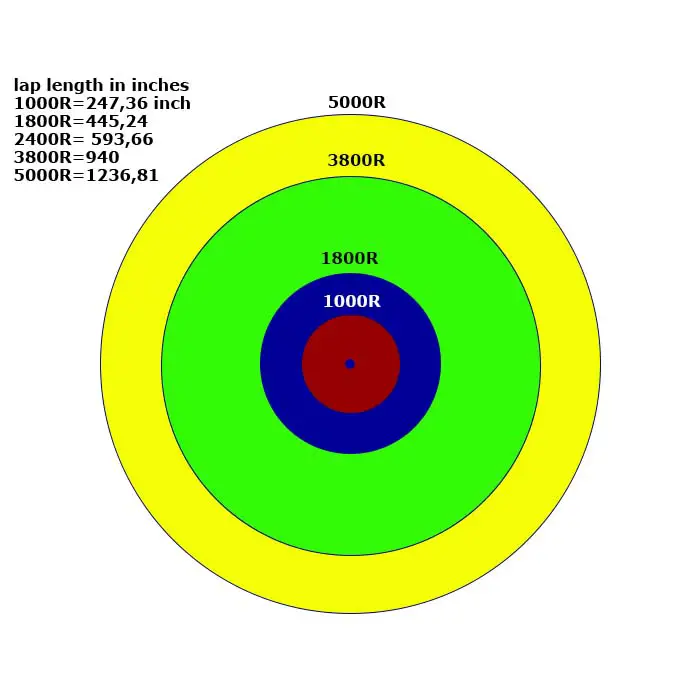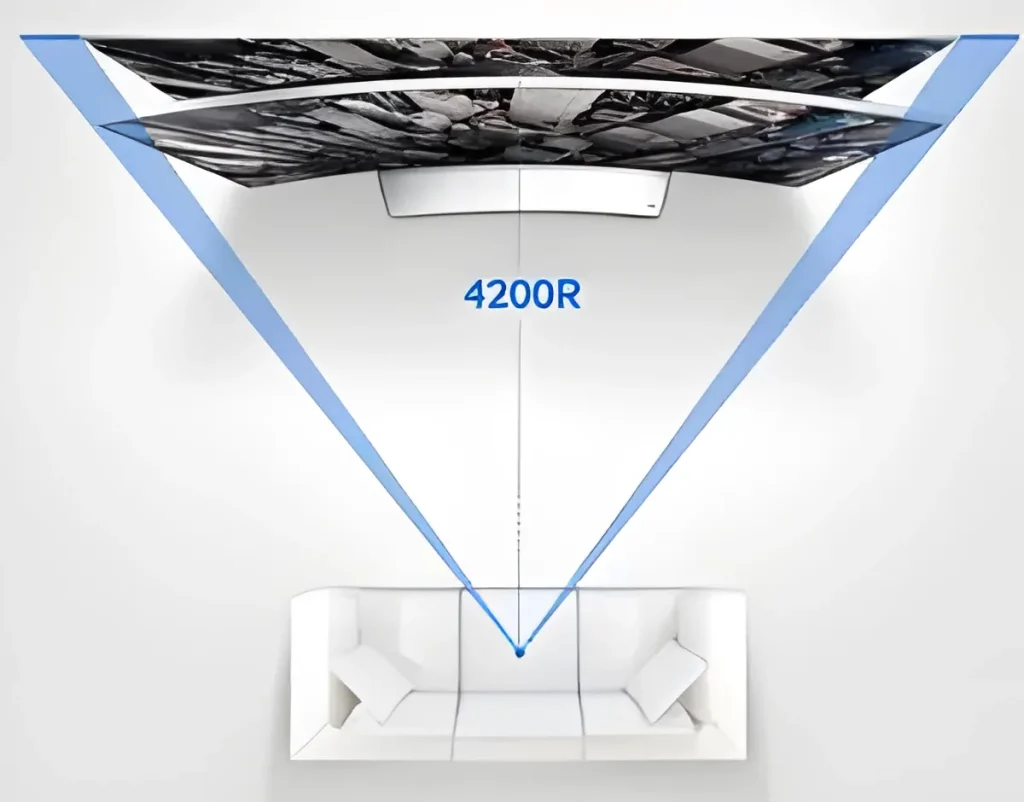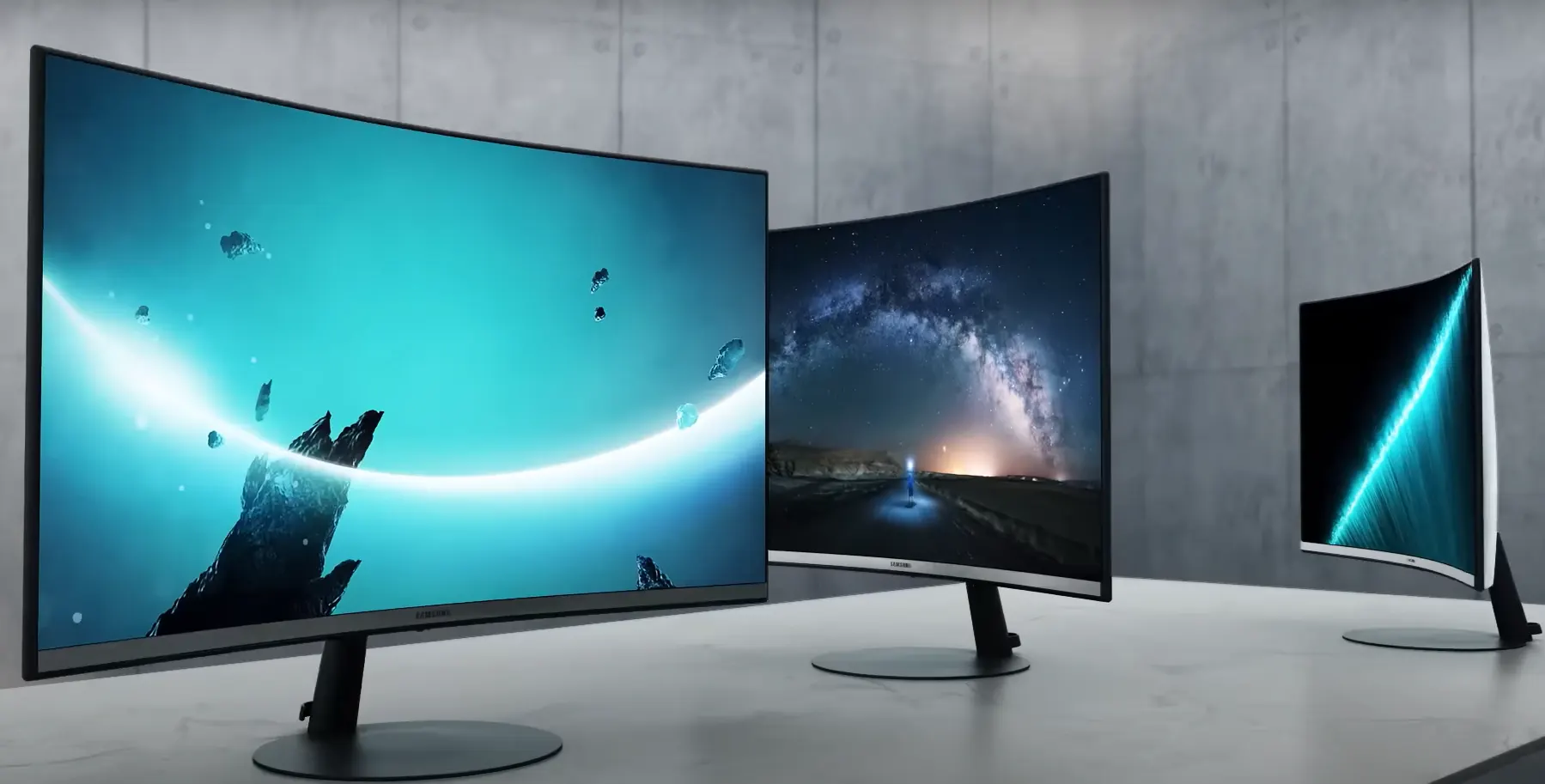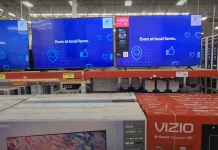Curved screens in TVs and monitors first appeared in 2012, but their popularity peaked between 2015 and 2019. Over time, however, the demand for curved TVs declined due to a couple of factors: as TV sizes increased and the aesthetic of a curved screen on a wall became less appealing, this form factor gradually fell out of favor. Nevertheless, curved monitors remain extremely popular today.
Curvature of the Screen
The curvature of a screen is defined by the radius of curvature, which can vary between 1000R, 1500R, 1800R, 4200R, 4600R, and 5000R. Here’s what each of these values means:
- 1000R = 1.0 meter (39.37 inches)
- 1500R = 1.5 meters (59.06 inches)
- 1800R = 1.8 meters (70.87 inches)
- 4200R = 4.2 meters (165.35 inches)
- 4600R = 4.6 meters (181.1 inches)
- 5000R = 5.0 meters (196.85 inches)

Generally speaking, the higher the number, the less noticeable the curvature of the screen.
Curved monitors typically have a curvature of 1000R, 1500R, or 1800R. These curves are quite pronounced, and it’s impractical to create monitors with a less pronounced curvature, as they would essentially resemble flat monitors.
For TVs, however, the situation is different. Curvatures in the range of 1000R to 1800R are inefficient for large displays, as the curvature is not comfortable for side viewing. As a result, curved TVs typically have a curvature of 4000R or higher. For large-screen TVs, the curvature is so slight that it may not be noticeable, and it may not significantly enhance the viewing experience. However, one downside of curved TVs remains: when mounted on a wall, they create a noticeable gap between the screen and the wall, impacting the overall aesthetic.
Pros and Cons of Curved Screens

Curved screens were designed to improve the viewing experience. However, for televisions, curvature proved ineffective, leading to the discontinuation of curved TVs. On the other hand, curved monitors provide a much better user experience. The pronounced curvature helps the screen occupy a larger portion of your field of view, and the distance from the edges to the center remains unchanged, providing an immersive experience.
Personally, I highly recommend curved monitors. I have used one myself and found it comfortable and enjoyable.
Manufacturing Curved Displays
It is important to note that curved screens for TVs and monitors are not originally curved. They are flat panels that are bent during the assembly process. For the production of such LED panels use special technologies and materials, such as flexible glass, so that the screen does not break when bending. OLED panels, in particular, are originally designed to be flexible, which allows curved OLED monitors to be created without problems.






